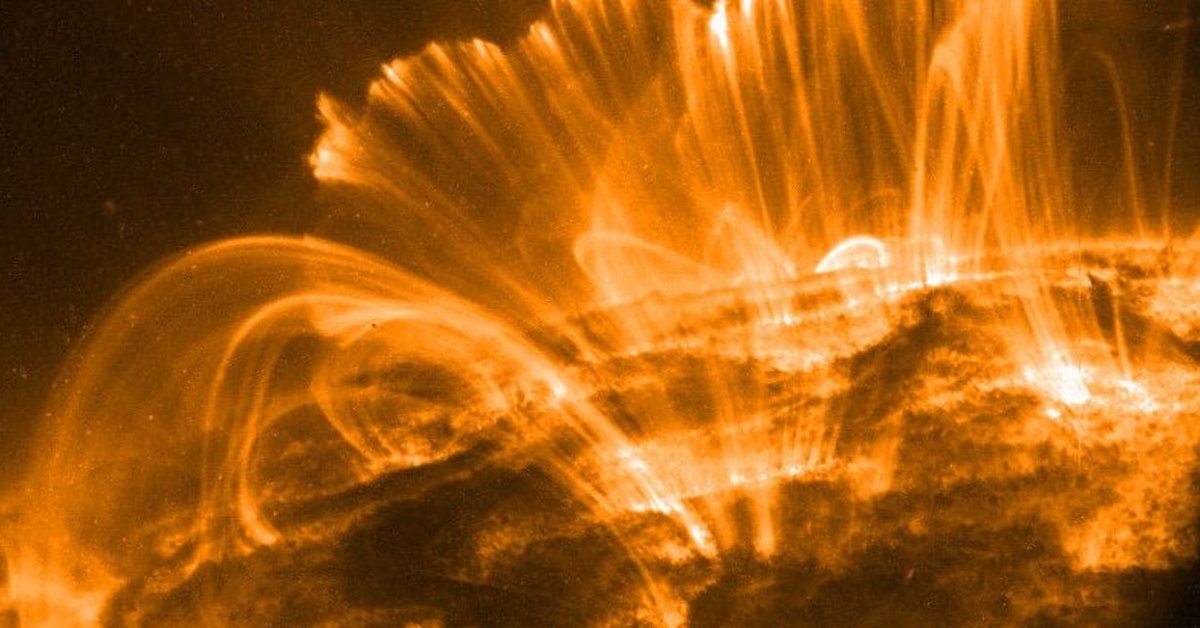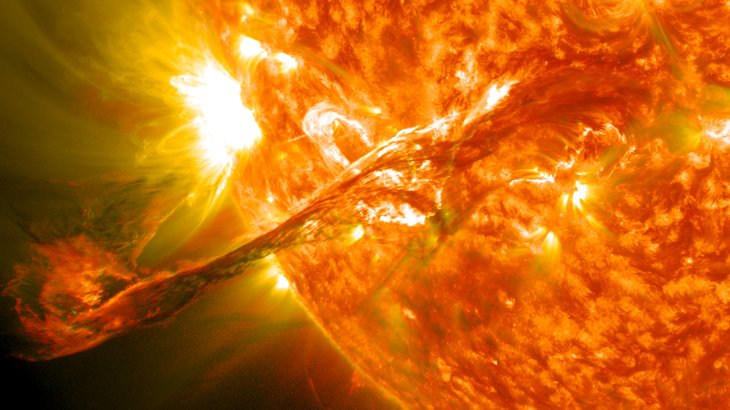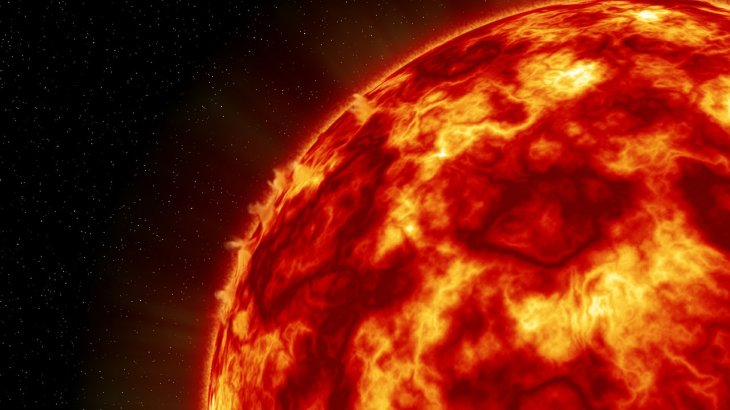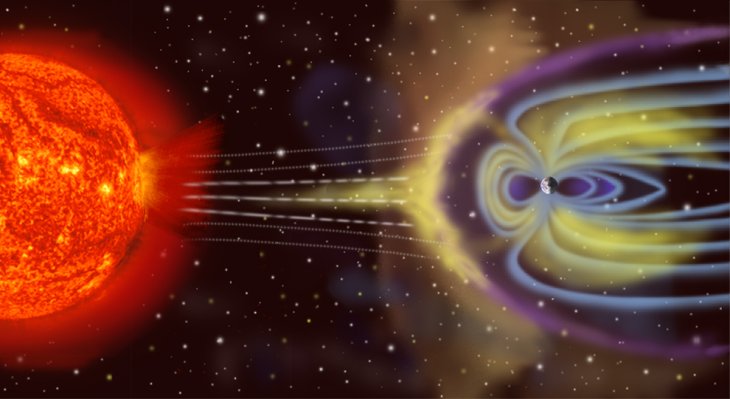We Would Be Devastated If This Ancient Solar Storm Hit The Earth
Aadhya Khatri - Mar 13, 2019

A new study discovers a gigantic solar storm hit Earth about 2,600 years ago, one about 10 times stronger than any solar storm recorded in the modern day.
2,600 years ago, a huge solar storm struck the Earth, which was the most powerful one ever recorded. The problem is the study that revealed it also suggested that such incidents might happen again. If this theory turns out to be true, we will be in serious trouble as it might destroy our electricity grid.

Such solar flares produce particles containing high energy and can put the lives of humans and all electronic devices at risk.
In the event of a proton storm strikes our planet’s magnetosphere, these particles are stuck inside the Earth’s magnetic field. A storm like that might have a disastrous effect on our high-tech society. One of such events happened in Canada in 1989. Quebec suffered sudden electricity cut due to a solar flare. Its impact even expanded to New Jersey and put the power grid region from the Middle Atlantic States to the Pacific Northwest at stake.
Experts have worked for nearly a century to learn more about these storms, but so far, they are unable to provide a credible answer on the frequency of these events or their power level.
According to Raimund Muscheler, a professor of quaternary sciences at Lund University in Sweden, unlike 2000 years ago, we had more important devices that could fall victim of a proton storm as well as human in the air and space who could suffer even more.
Before the Quebec incident, there was another storm that was the source of the Carrington Event in 1859. This one was 10 times more powerful than its successor in Canada. Since then, our world has grown more dependent on electricity as the chief power source. Research published in 2013 by Lloyd’s of London suggested that if our modern suffered the same disaster event now, the impact would last up to years as the most vital parts of the grid would be out of order.

With the finding of radioactive atoms in Greenland, scientists think that an even bigger storm had hit the Earth in 660 B.C, a storm with the magnitude that can tower above that of the Carrington Event.
Other studies have revealed that these storms might cause atoms of carbon-14, chlorine-36, and beryllium-10 to fill the Earth’s atmosphere. Traces of such events can be found in ice and tree rings, which can be a viable way for experts to gain more knowledge of sun behavior in the past.
The ice samples taken from Greenland suggested a sharp increase of beryllium-10 and chlorine-36 dating back around 2,610 years ago. A study with tree rings found a similar result of a sudden soar of carbon-14 around that same timeline.
There were two other storms; one occurred sometime in between A.D 993 and A.D 994; the other was between A.D 774 and A.D 775, which is also the most powerful sun storm we have ever known so far. Both of these two storms are 10 times stronger than the strongest one that happened in 1956 if we use the number of protons as the main factor to determine the power level.
We have no accurate information on the number of protons in the Carrington Event, so it is impossible to reach a credible answer on which one is more powerful, the Carrington or the two ancient storms. What scientists are able to tell us now is if the two flares are somehow related to a geomagnetic storm, they can be far worse than what we can make out from the Carrington.

We still need more research to be able to estimate how much damage we will suffer in the event of such kind of storms. However, we now know for sure that there were at least three in the last 3000 years, more might be found in the future, and proton storms may happen again and again.
Muscheler called for more study into what we have already recorded about the environment to be able to estimate the damage of a large storm and also smaller ones. He also said that it was possible that there were less powerful storms we have not yet known of, but with the magnitude that can dwarf more recently recorded ones.
More details on this study can be found in Proceedings, the journey of the National Academy of Sciences.
Featured Stories

Features - Jul 01, 2025
What Are The Fastest Passenger Vehicles Ever Created?

Features - Jun 25, 2025
Japan Hydrogen Breakthrough: Scientists Crack the Clean Energy Code with...

ICT News - Jun 25, 2025
AI Intimidation Tactics: CEOs Turn Flawed Technology Into Employee Fear Machine

Review - Jun 25, 2025
Windows 11 Problems: Is Microsoft's "Best" OS Actually Getting Worse?

Features - Jun 22, 2025
Telegram Founder Pavel Durov Plans to Split $14 Billion Fortune Among 106 Children

ICT News - Jun 22, 2025
Neuralink Telepathy Chip Enables Quadriplegic Rob Greiner to Control Games with...

Features - Jun 21, 2025
This Over $100 Bottle Has Nothing But Fresh Air Inside

Features - Jun 18, 2025
Best Mobile VPN Apps for Gaming 2025: Complete Guide

Features - Jun 18, 2025
A Math Formula Tells Us How Long Everything Will Live

Features - Jun 16, 2025
Comments
Sort by Newest | Popular